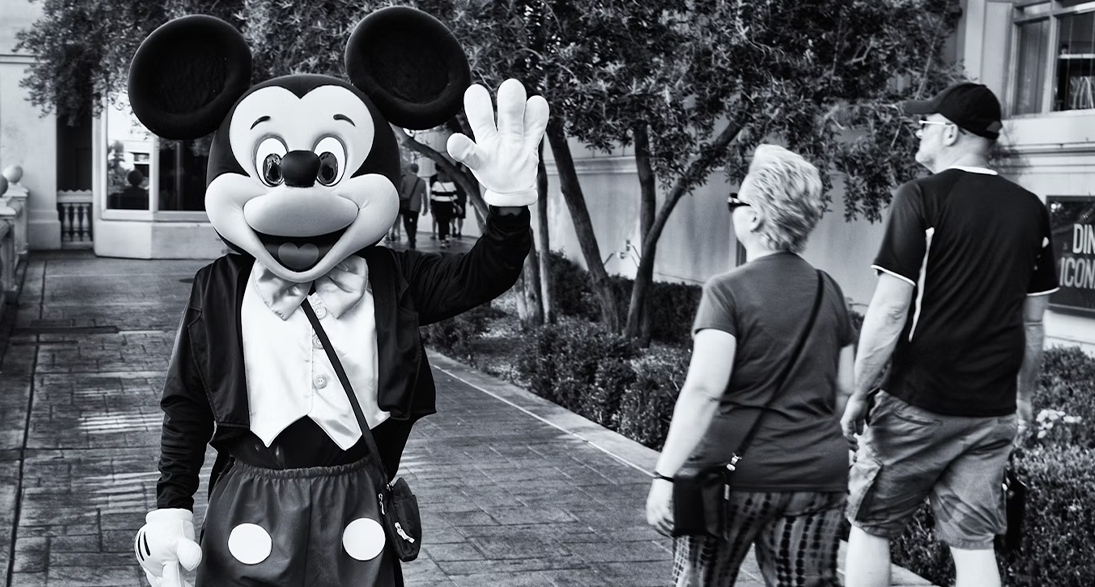YOU CAN’T DISRUPT ALONE: INNOVATION NEEDS A SYSTEM

2025
Innovation. A buzzword, a KPI, a post-it on a whiteboard somewhere. Everyone wants it, many say they do it on a daily basis, some even claim to own it — but let's get something straight: you can't innovate in isolation.
Often, companies treat innovation like it’s a department. A lab. A task force.
Sticky notes everywhere, quotes on the wall, a backlog stuffed with ideas sparked at the watercooler — and someone at the whiteboard doodling like they’re about to give a TED Talk.
Sure, those moments can ignite ideas — but innovation that stays siloed? That’s not innovation. It’s a side hustle. One that’s likely to fail — or, if it survives, won’t move the needle much. True innovation is systemic. It flows across teams, functions, and capabilities.
Innovation starts with conversation
Before any digital transformation, CX redesign, or new service idea can take shape, there’s a crucial first step: talking to each other.
In every project my team leads, understanding the full picture requires us to connect with everyone involved — internal teams, external partners, frontline staff, and customers themselves. Because without open, continuous communication, the complexities of business operations, customer needs, and partner roles remain invisible.
We explore the business model, operational realities, partner limitations, service delivery flows, data availability, backend systems, customer expectations — the full context. Because let’s be real: you can’t design relevant solutions in a vacuum. You have to co-shape them with the people who live the experience — those delivering it and those receiving it.
Only by sharing insights, asking questions, and breaking down silos can we truly grasp the challenges and opportunities at hand. This collaborative dialogue forms the foundation where innovation can actually begin to grow.
Choreography beat chaos every time
Innovation doesn’t need chaos, though. What it actually needs is choreography.
Walt Disney once spoke about the magic of choreography in storytelling — how every movement, every interaction, every detail must be thoughtfully designed to create a seamless experience. This philosophy applies perfectly to innovation and collaboration. Just like a well-choreographed scene turns chaos into captivating art, ritualized collaboration and clear frameworks transform the messy, unpredictable nature of innovation into something purposeful and repeatable. Innovation doesn’t thrive in chaos; it thrives in design — in ceremonies, rituals, and processes that guide diverse teams to move in harmony.

At ATCOM, we believe in ritualizing collaboration, so innovation has room to thrive — and doesn’t fall apart in handoffs and siloed chunks. What does that look like in practice? Here's what we mean:
- Cross-functional ceremonies— not just “all hands,” but meaningful rituals: discovery sessions, innovation sprints, retrospectives with purpose.
- Design thinking rituals that bring customers, employees, and stakeholders into the process early — to co-create, prototype, and validate experiences before they launch.
- Transparent prioritization frameworks that help teams decide which ideas to pursue, which to park, and which to reshape.
- Service design documentation and facilitation that turn concepts into clearly communicated, operational strategies — ready to be implemented and scaled.
Because without structure, creativity isn’t empowered — it’s exhausted. And you’re just hoping chaos will organize itself.
What does innovation actually look like?
It’s not always AI. It’s not always a shiny app or a big bang launch. More often, innovation looks like solving real problems — creatively, collaboratively, and with purpose.
In our team, every challenge starts with a question:
What’s the experience we’re trying to change? And who’s living it — consumer, another business (B2B customer, that is), employee, partner, or all at once?
That means innovation looks like:
- Helping an FMCG brand build direct-to-consumer engagement through personalized, contextual touchpoints — delivering the right experience, at the right time, on the right channel, making every interaction meaningful and relevant.
- Assisting an airline in redesigning its disruption handling workflows, so customers feel informed and cared for even when things don’t go as planned.
- Equipping organizations with the tools to simulate and test whether a new customer journey or service flow will truly meet expectations — before they invest in rolling it out. Validating assumptions. Spotting breakdowns early.
- Helping leadership align around a clear CX vision, then translating that into actionable transformation frameworks, prioritized investments, and operational plans.
Sometimes innovation means using AI to spot anomalies or optimize decisions. Other times, it means fixing invisible frictions: a broken notification flow, a silent failed payment, a rigid internal process that blocks a delightful customer moment.
In all cases, we approach challenges holistically — not just through the lens of tech or business, but through service design, behavioral insight, systems thinking, and continuous collaboration.
Because if innovation ain’t making things easier, it’s just adding more junk to the pile.

Innovation needs a system
At ATCOM, we help organizations design and deliver digital transformation strategies with CX at the core — because no matter how advanced the technology is, what truly matters is the experience it enables.
But innovation rarely happens by chance. It requires a deliberate, repeatable framework — a system that guides ideas from spark to scale while keeping the customer experience front and center.
Such a framework usually includes:
- Clear vision and purpose: Innovation needs a strategic compass — a compass, not a crystal ball — and a guiding mission aligned with business goals and customer needs. Without it, efforts become scattered, short-lived, and lost in the fog.
- Cross-functional collaboration rituals: Regularly scheduled ceremonies (like innovation sprints, design workshops, and retrospectives) ensure ideas are co-created, challenged, and refined with diverse perspectives.
- Experimentation and validation: Innovation isn’t just about ideas — it’s about testing hypotheses quickly and cheaply. Prototyping, pilot programs, and customer feedback loops help reduce risk and improve relevance.
- Prioritization and governance: Not all ideas are created equal. A transparent, agreed-upon process for prioritizing initiatives keeps resources focused on what delivers real value.
- Scalability and integration: Innovation must be operationalized. That means considering technology architecture, process redesign, and organizational readiness from the start.
- Continuous learning and adaptation: The market, technologies, and customer expectations change rapidly. Innovation frameworks must embed ongoing learning, data-driven insights, and adaptability.
At its best, an innovation system becomes part of the company’s DNA — a cultural rhythm that empowers teams to experiment boldly while staying grounded in delivering meaningful, impactful experiences.
So, stop tagging innovation like it’s some exclusive club. It’s a block party — everyone’s invited, whether they RSVP’d or not. Great ideas are fun, sure. But without the right systems — ones that enable clear communication and real collaboration — they rarely become better journeys, happier customers, or fewer “uh-oh” moments. Innovation isn’t something you manifest. You need to map it, test it, ritualize it — across every journey, touchpoint, and function. Let’s stop gatekeeping and start enabling. That’s the real transformation.
